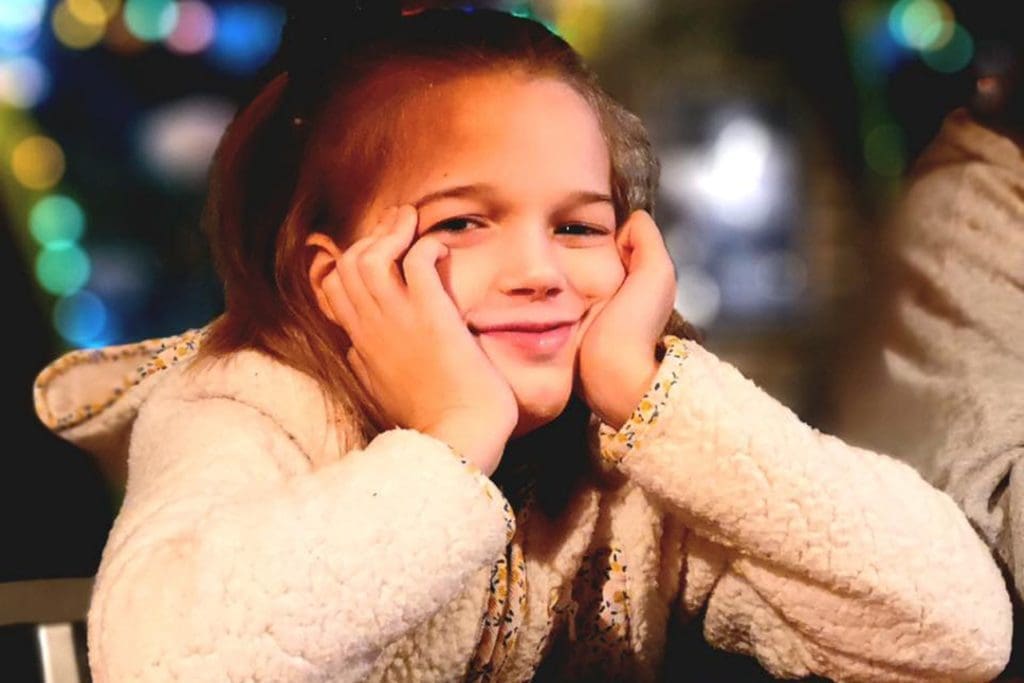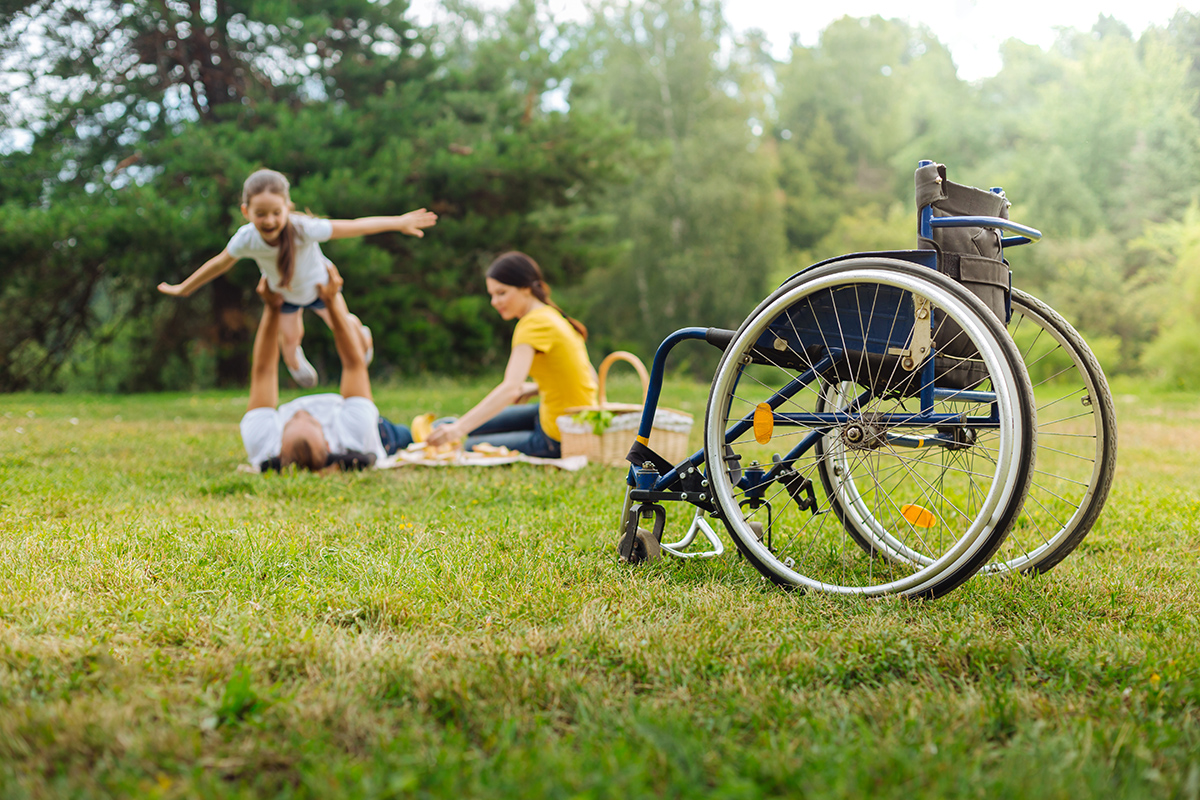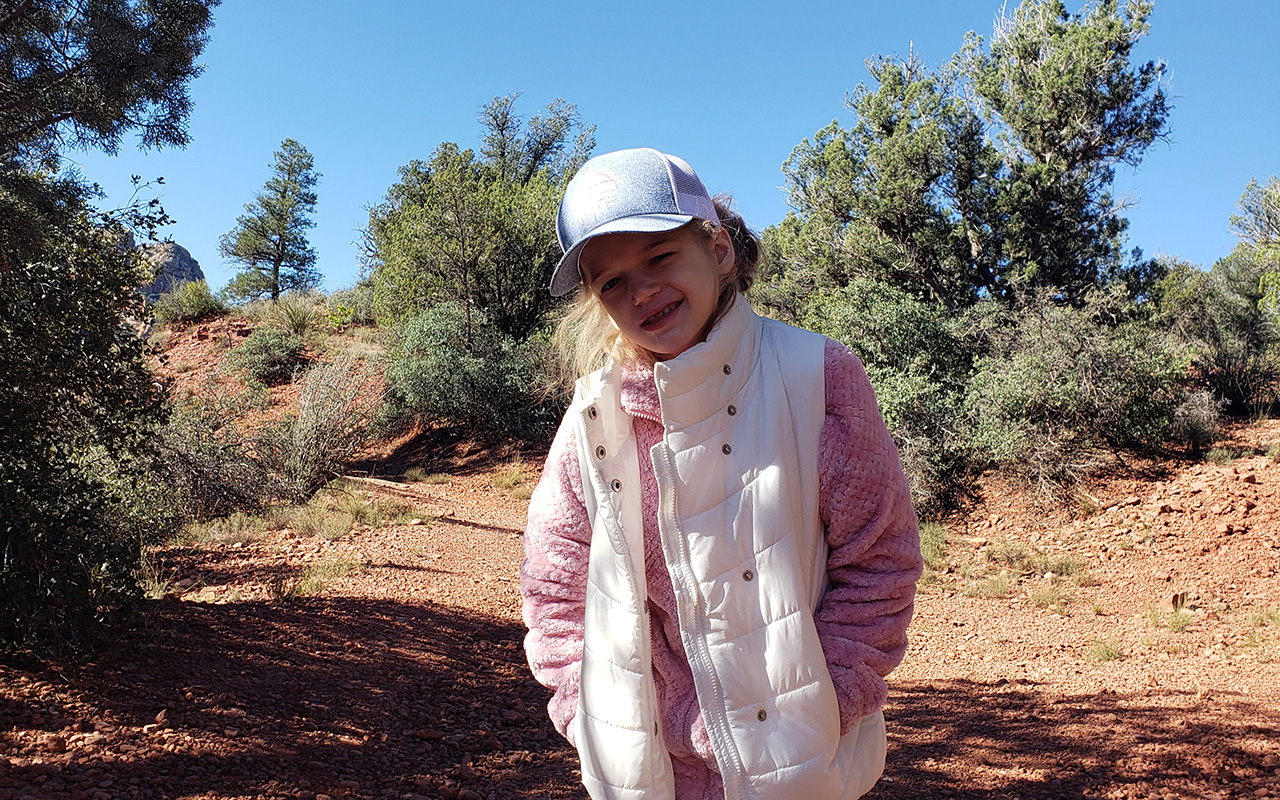Our daughter Kathryn Faith was born on February 24, 2011. She was a healthy 8 lb, 2 oz baby who got dismissed early from the hospital! We were anxious to be home with our two-and-a-half-year-old son, so we asked for early (24hr) dismissal. She was a typical baby, smiling, eating, and happy to be with her family.
When she was six weeks old, she had a small (5-minute) episode of stiffening in her arm. We thought nothing of it, but when she was around five months old, she had an episode that looked like seizures (she was turned to one side and had small tremors.) We asked our pediatrician about it; he thought we should keep an eye on it and pursue it if it happened again. It happened again, so we had an EEG, which was normal. Then, at seven months old, she had an episode that started like the other episodes; her head was turned to one side, she had stiffening on one side of her body, and it was accompanied by weird eye movements. We were admitted to the hospital, where she had a 24-hour EEG and other tests, with no conclusions. They transferred us to another hospital (Riley Children’s Hospital, Indianapolis, IN), where we stayed for five days and had multiple tests done, including MRI, EEG, EMG, and a spinal tap. Kathryn slowly came out of the episode, and we were dismissed with instructions to follow up with neurology in a year, but we still had no answers.
At 11 months, she had another severe episode, and we tried a different hospital (Cincinnati Children’s), where a neurology resident mentioned AHC as a possible diagnosis. We knew it was a rare condition, but the symptoms seemed to fit, so our neurologist started Kathryn on Flunarizine. Fortunately, we were diagnosed early, and a later genetic test confirmed a mutation on the 1ATP3 gene. Kathryn will have hemiplegic episodes every 7-10 days. While in episodes, she will be unable to walk, and when it is a right-side episode, she will have difficulty eating and speaking. One of Kathryn’s most common triggers for AHC is being excited; for example, a dinner with friends can cause her to have paralysis on one or both sides. We have found that a low dose of valium can ease some anxiety and excitement.
At the age of 8, Kathryn started having seizures, and that has been difficult to manage. Over half of her seizures have resulted in Kathryn being on a ventilator. We have tried a combination of seizure medications, and she is currently taking three different medications with some success.
Kathryn is currently being home-schooled due to her frequent AHC episodes. She is, however, still connected with her school, St. Gabriel, and loves seeing her friends. In addition, Kathryn loves playing office and traveling with her family. We are fortunate to have an assistive stroller so Kathryn can travel to the most ADA-accessible places.
We, like all AHC families, are working to help end AHC. For many families, that includes raising awareness through local events, attending AHCF family meetings, educating teachers and healthcare professionals, and being active in AHCF. In addition, many researchers and institutions are working on our behalf to end AHC. We remain hopeful that we will see an END to AHC in Kathryn’s lifetime.





